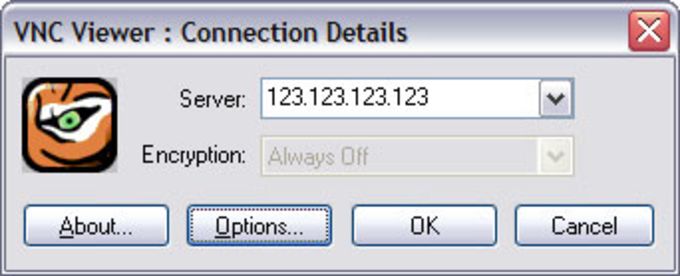
- TIGERVNC CLIENT WINDOWS UPDATE
- TIGERVNC CLIENT WINDOWS ANDROID
- TIGERVNC CLIENT WINDOWS PASSWORD
- TIGERVNC CLIENT WINDOWS FREE
- TIGERVNC CLIENT WINDOWS WINDOWS
In order to have a VNC Server running x0vncserver, which is the easiest way for most users to quickly have remote access to the current desktop, create a systemd unit as follows replacing the user and the options with the desired ones: etc/systemd/system/rvice ĭescription=Remote desktop service (VNC) for :0 displayĮnvironment=XAUTHORITY=/var/run/lightdm/root/:0ĮxecStart=x0vncserver -display :0 -rfbauth ~/.vnc/passwdĪs this is a system unit, -rfbauth ~/.vnc/passwd refers to /root/.vnc/passwd LightDM is used for the example below, but it should be possible to adapt it to other display managers by modifying the XAUTHORITY variable. The service will be relaunched automatically every time an user logs off of their session. This option will allow the users to access the current display, including the login screen provided by your display manager. See: Issue #529.Ī simple way to start x0vncserver is adding a line in one of the xprofile files such as:
TIGERVNC CLIENT WINDOWS FREE
If another parallel server is needed, a second instance can then run on the next highest, free port, i.e 5902 (5900+2). The number in the file corresponds to a TCP port. Each user defined in this file will have a corresponding port on which its session will run.
TIGERVNC CLIENT WINDOWS PASSWORD
TIGERVNC CLIENT WINDOWS WINDOWS
9.5 No window decoration / borders / titlebars / cannot move windows around.9.4 Copying clipboard content from the remote machine.9.2 Empty black window with mouse cursor.8.4.2 Mapping the keyboard key presses back to mouse button clicks on the server.8.4.1 Substituting mouse back/forward buttons with keyboard keys XF86Back/XF86Forward.8.4 Workaround for mouse back and forward buttons not working.
TIGERVNC CLIENT WINDOWS ANDROID
7.3 Connecting to a vncserver from Android devices over SSH.5 Running Xvnc with XDMCP for on demand sessions.


TigerVNC became the default VNC implementation in Fedora shortly after its creation. TigerVNC focuses on performance and on remote display functionality. Conversely, TightVNC has features that TigerVNC doesn't have, such as file transfers. For example, TigerVNC adds encryption for all supported operating systems and not just Linux. TigerVNC has a different feature set than TightVNC, despite its origins. TigerVNC is fully open-source, with development and discussion done via publicly accessible mailing lists and repositories. The past few years however, Cendio AB who use it for their product ThinLinc is the main contributor to the project.
TIGERVNC CLIENT WINDOWS UPDATE
Red Hat, Cendio AB, and TurboVNC maintainers started this fork because RealVNC had focused on their enterprise non-open VNC and no TightVNC update had appeared since 2006.

There is no server for macOS and the Windows server as of release 1.11.0 is no longer maintained. The client supports Windows, Linux and macOS. TigerVNC is an open source Virtual Network Computing (VNC) server and client software, started as a fork of TightVNC in 2009. Remote desktop, Remote administration, Distributed computing Server: Linux Client: MS Windows (32-bit/64-bit) ( NT/ 2000/ XP), POSIX ( Linux/ BSD/ OS X/ UNIX-like OSes), MinGW/ MSYS (MS Windows)


 0 kommentar(er)
0 kommentar(er)
